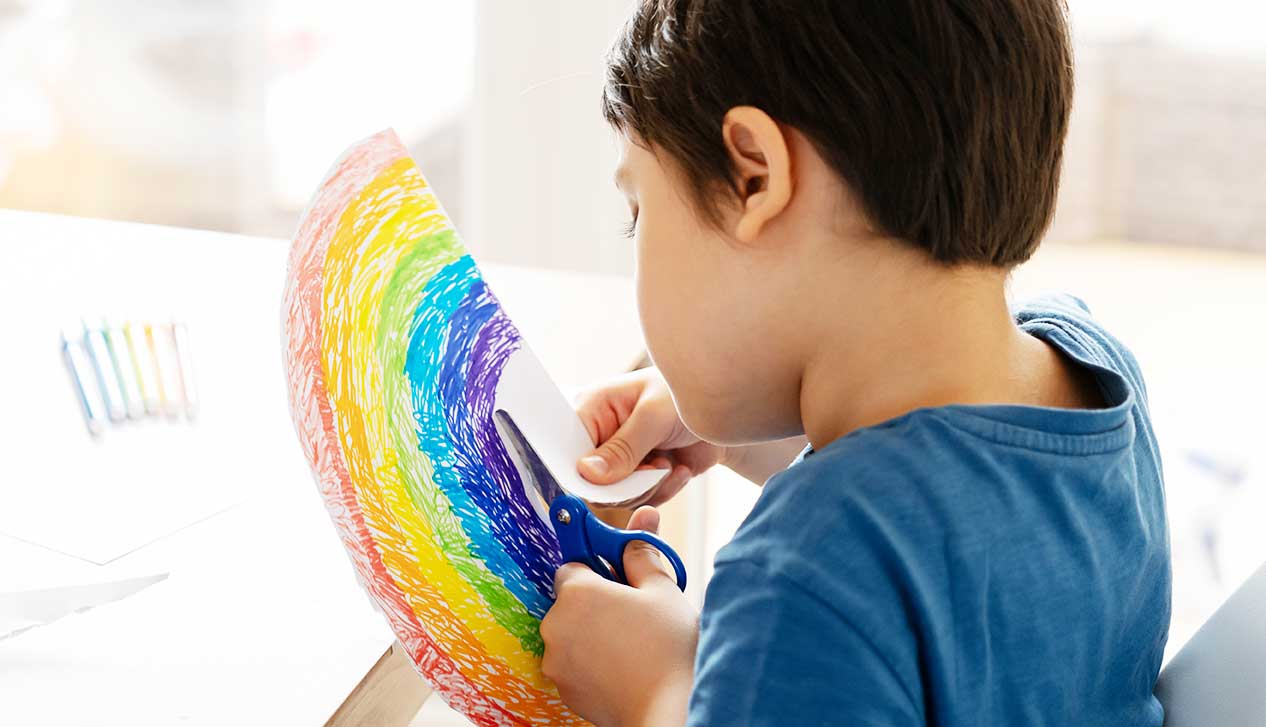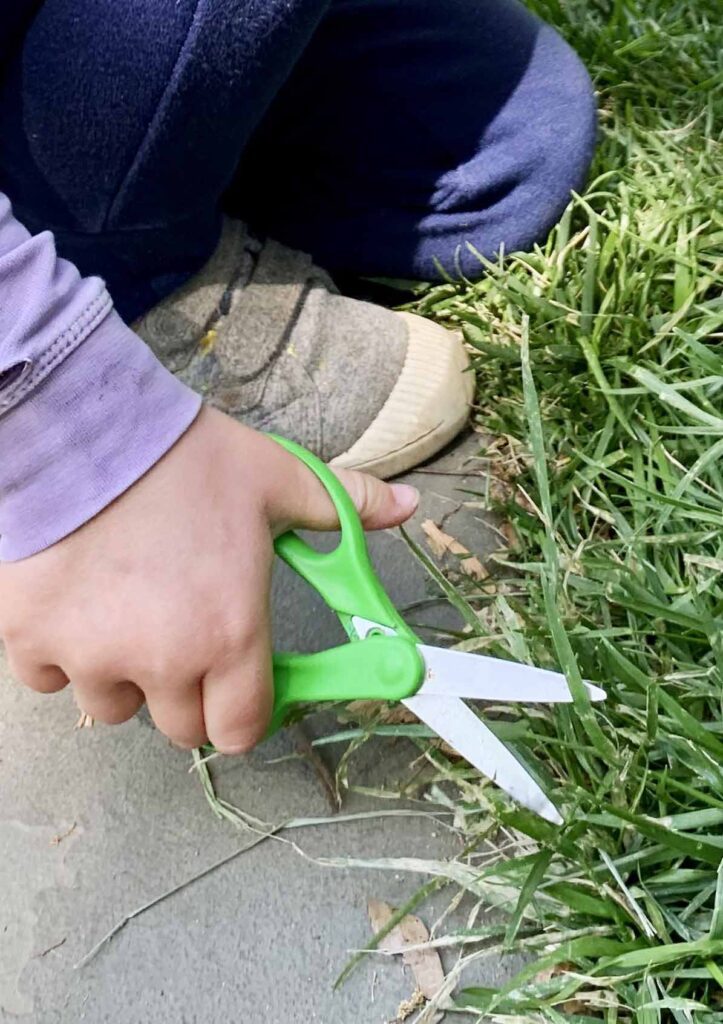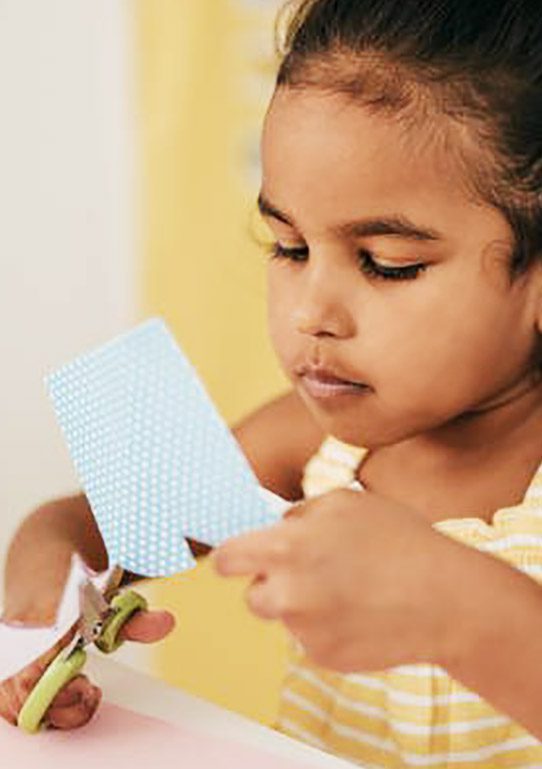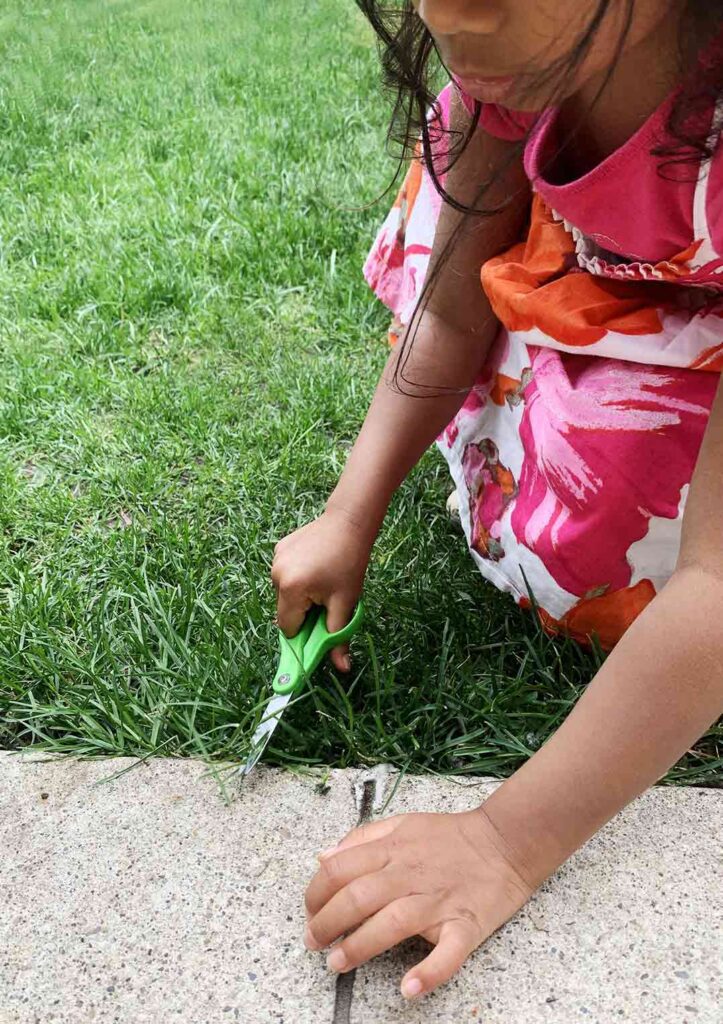Scissor Skills
Introduction
Learning how to cut with scissors isn't easy. But the more your child practices, the easier it gets. This activity includes tips that will make cutting with scissors easier for both of you!

Gather Materials
- Scissors (small scissors work best for small hands; if you're looking for a good brand, try Fiskers or Westcott)
- A variety of thick papers such as construction paper, index cards, magazine inserts, paper plates or straws (playdough is also a great option for beginners!)
Note: Small parts pose a choking hazard and are not appropriate for children age five or under. Be sure to choose lesson materials that you feel are safe for your child and that you are comfortable letting your child use.
Activity
A little pre-kindergarten practice with scissor skills will help your child feel confident and successful during those first few days of school.
But—before breaking out those scissors—it's a good idea to engage in some pre-cutting activities that will help strengthen your child's hand muscles.
Ripping and tearing paper is a great pre-cutting activity for younger children. The ripping action helps develop the grasp that children need for successful scissor and handwriting skills. Have your child practice ripping junk mail or other paper materials into the recycling bin. Show your child how to hold the paper with both thumbs at the top and pull with one hand while pushing with the other.
Try stringing beads or lacing cards. Both activities will support the development of good scissor skills and (down the road) strong pencil-grasping skills.
Play "Simon Says" to teach "thumbs up" and "thumbs down" and introduce your child to the "thumb on top" concept, which will come into play when your child learns scissor skills.
Use playdough or clay to build hand strength and coordination, which will support the development of scissor skills and handwriting skills.
When you're ready to teach your child how to use scissors, be sure to buy the correct scissors for your "righty" or "lefty." The blades are switched on left-handed scissors so that lefties have a clear view of the cutting line.
Keep in mind that cutting with scissors is a two-handed skill. Children have a working hand, which holds the scissors, and a helping hand, which holds the object being cut.
Children will have the most success if they keep the thumb of their working hand (holding the scissors) on top and the thumb of their helping hand (holding the paper) on top as well. If the thumb is on top of the paper, your child will have more control over the paper as he or she turns it to cut different shapes. Draw a smiley face on each thumbnail as a reminder to keep the thumbs on top!
Next, show your child how to hold a pair of scissors. You can help your child learn this skill by using this rhyme: "Fingers on the bottom and the thumb on top, open and shut them, chop, chop, chop!
Don't forget to watch those elbows! If your child's elbows are sticking out, a change of sitting position can help keep elbows closer to the body, which will stabilize the arms. It may sound crazy, but this subtle adjustment is one of the keys to successful cutting.
Now that you've got the proper scissor-holding technique and the elbows are in, let the cutting begin!
Start with some small snips across a piece of paper or around the perimeter of a paper plate. Let the helping hand move the paper as your child works on snipping. Once your child has mastered the snip, it's time to get bold and cut across a full sheet of paper. I like to use smaller pieces of junk mail that are a little thicker, as they are easier for children to hold and cut.
Looking for other great practice materials? Break out the playdough! I like playdough for cutting practice because it's easy for a child to cut and it's easier to pick up than all of those slivers of paper.
Give your child ample time to practice, practice, practice. Take a pair of scissors outdoors and let your child cut the grass. Kids love cutting grass with scissors—and there's no mess to clean up.
Above all, keep it easy and keep it fun! When your child tires of the activity, don't push it. Cutting with scissors is hard work for little hands. But you will notice that cutting gets easier for your child with each successive practice session.
Need more help teaching your child scissor skills? Watch the OT Guide's video, Teach your child how to use scissors. It's a great resource!


